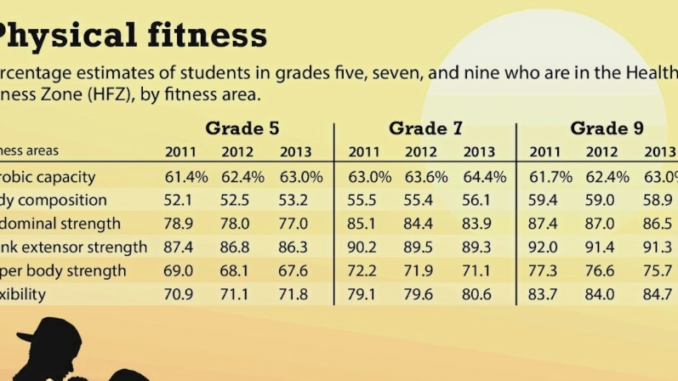
By Sofia Williams
News Editor
After a two-year gap where students were not required to complete physical fitness testing due to COVID-19 restrictions, MBUSD is reinstating the policy. Since fitness tests may lead to bullying, discrimination against LGBTQ individuals, and insecurity regarding weight and personal image, students should be given a wider variety of options with which they can test their fitness.
The credentials required to pass the fitness test are meant to represent the minimum level of physical fitness associated with protection against disease related to lack of physical activity, according to the California Department of Education. To pass the test, students in grades five, seven, and nine must meet requirements in five different exercises: a Progressive Aerobic Cardiovascular Endurance Run (PACER) test, a push-up test, a curl-up test, a “back saver sit n’ reach” test, and a flexibility assessment.
Despite the benign nature of these fitness standards, physical tests can prove damaging to students’ self-esteem. If students are unable to meet the test’s standards, they may feel embarrassed or ashamed, especially as students watch each other complete the tests. As this can lead to bullying towards students who fail the testing, it is important that students feel comfortable in whatever setting they are being evaluated in. During testing, students should be given a variety of options for aerobic and anaerobic exercises to complete and the ability to choose their preferred form of exercise and be given the option to be tested out of sight of others.
Fitness tests impose separate requirements for boys and girls, a policy discriminatory towards non-binary individuals, causing some to feel that their identity is not accepted. These evaluations contribute to LGBTQIA+ erasure by forcing students to select their sex on the fitness testing form–-a portion that should be optional. According to a 2012 study done by the University of Indiana, there is little to no difference in height, weight, and strength between boys and girls up to age 12. Therefore, in the fifth and seventh grades it may not always be necessary for boys to complete more physically strenuous activities than girls. Metabolism and regularity of exercise, the main factors that determine physical fitness, vary among all students. For more accurate reflection of facts, a general set of gender-neutral fitness requirements should be imposed using a variety of physical tests.
While two to three alternative fitness test options are currently available to disabled students, a wide range of abilities and conditions cannot be categorized into just a few test options. According to the International Journal for Special Education, differences in individual students’ cases can cause them to have different fitness needs, even if they are diagnosed with the same condition. As such, disabled students’ fitness tests should be devised and administered by a trusted caretaker who is knowledgeable of the student’s condition, and reported to the state directly from that individual. In this way, the student is comfortable with both their testing environment and the testing requirements.
While it is important to ensure that students exercise healthy habits and are fit enough to prevent illness, students’ comfort should also be prioritized. In 2019, 16% of high school students in California were classified as obese, according to the CDC. While it can be said that fitness testing could motivate students to live a healthier lifestyle, more often than not it serves the opposite purpose; students who are of an unhealthy weight should be encouraged to be more active in an inclusive environment rather than one where they are ostracized and bullied.
LGBTQ students are usually underrepresented in school curriculum, and fitness testing should not contribute to this exclusion. Additionally, students with serious health conditions or disabilities should not be made to take a fitness test unsuited to their condition. Therefore, it is important to promote student mental health by providing multiple options for fitness tests that do not discriminate on the basis of gender, weight, or disability.





Leave a Reply